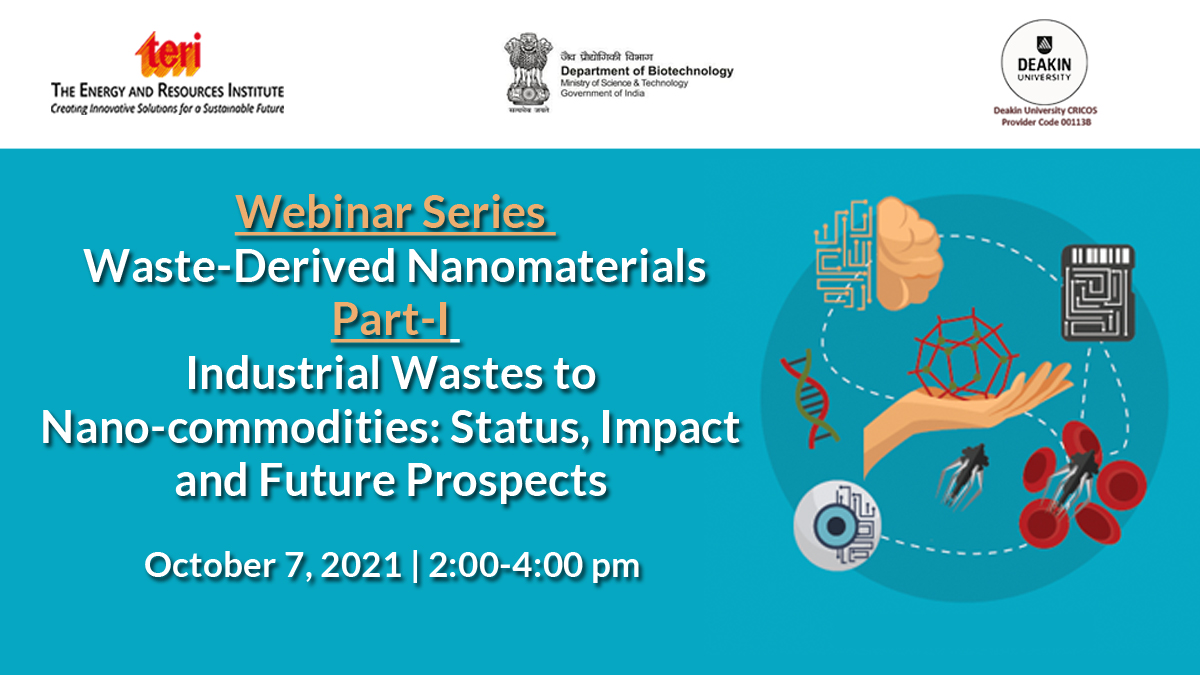Webinar Series on Waste-Derived Nanomaterials: Part-I Industrial Wastes to Nano-commodities: Status, Impact and Future Prospects
The webinar aims at highlighting various leads being taken to derive nano-materials from different waste resources via a 'Circular Economy' model.

On 7 October 2021, 02:00 PM to 4:30 PM IST
The Energy and Resources Institute (TERI) with the Department of Biotechnology (DBT), Government of India, and Deakin University South Asia is organising a webinar on "Waste-Derived Nano-materials: Status, Impact and Future Prospects" on October 7, 2021 from 2 - 4:30 PM.
Globally, around billion tonnes of solid waste is generated every year, causing drastic losses to the environment, atmosphere and human health. This situation has motivated the development and implementation of different policy strategies including complete bans on single-use plastics, the reduction of hazardous substances and treatment of hazardous wastes to reduce their toxicity. Since waste materials (such as municipal solid waste, household trash/ refuse, hazardous waste, waste water like sewage, surface runoff, e- waste, industrial waste like radioactive waste and industrial sludges) are good sources for the recovery of metals and other elements, they have tremendous potential for the synthesis of nano-materials. In last few decades, sufficient progress has been made for the synthesis of nano-materials from wastes using chemical or biochemical approaches and a paradigm shift has now taken place to “create wealth from waste” rather than mere remediation of waste.
With this context, this webinar will focus on highlighting the various leads being taken to derive nano-materials from different waste resources via a 'Circular Economy' model. It will simultaneously define the scope, use and environmental impact of the waste-derived nano- materials.
In addition, the other major focus areas of the webinar will be -
- Case studies based on the nanofertilizers or nanomaterials and associated pros and cons
- Designs of safer chemical reaction and synthetic routes that yield enhanced sustainability outcomes
- The fate of nano-materials after application: Monitoring the reaction to prevent the formation and release of any potentially hazardous and polluting substances, and
- Life cycle assessment of waste-derived nano-materials
